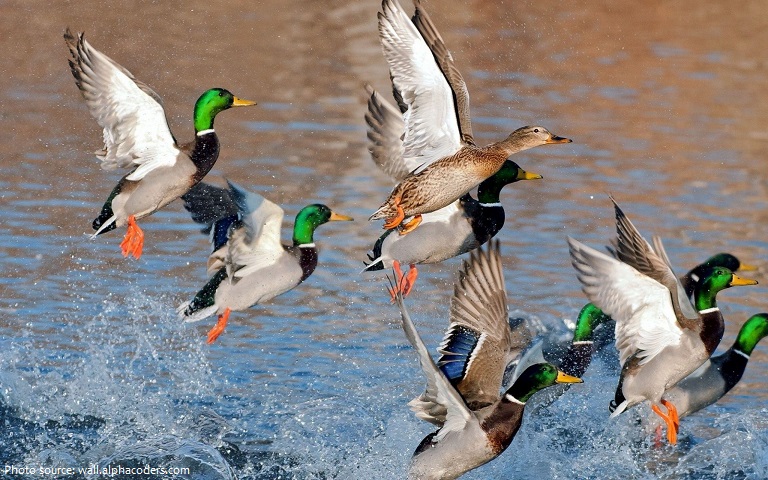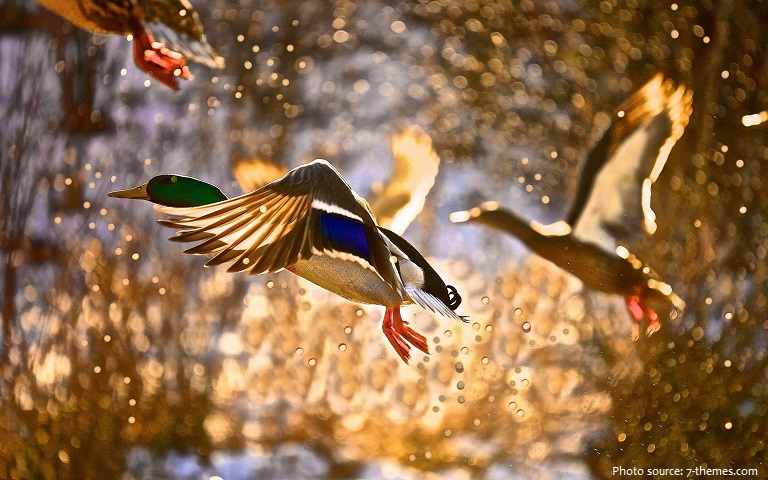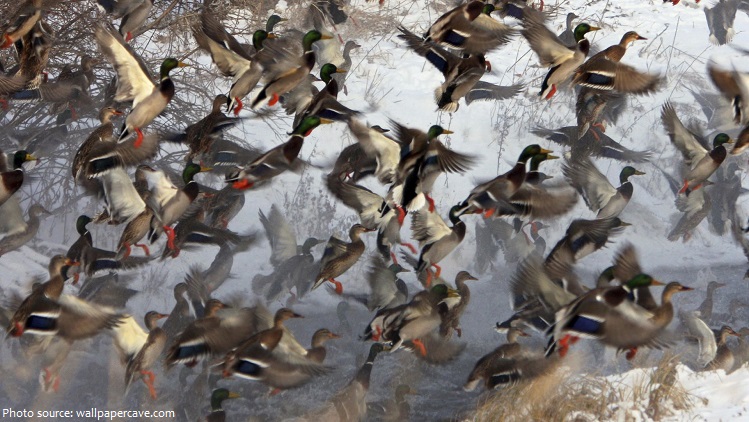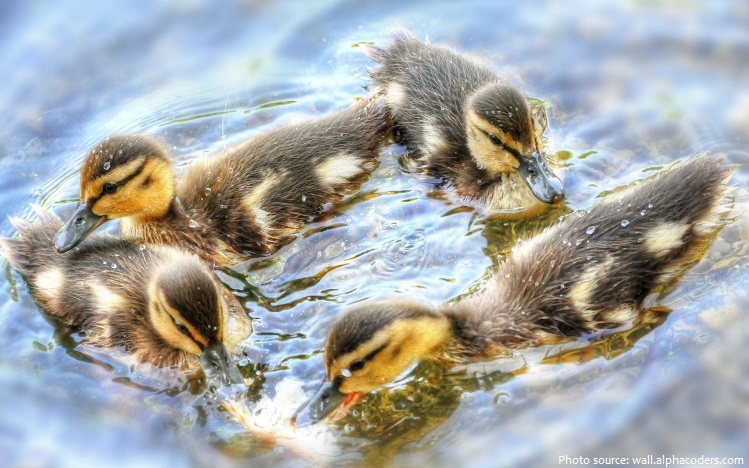The mallard is a dabbling duck that breeds throughout the temperate and subtropical Americas, Eurasia, and North Africa and has been introduced to New Zealand, Australia, Peru, Brazil, Uruguay, Argentina, Chile, Colombia, the Falkland Islands, and South Africa.
Most often, they prefer wetlands, where highly productive waters produce large amounts of floating, emergent and submerged vegetation Wetlands also produce a great deal of aquatic invertebrates on which mallards feed.
The mallard is undoubtably the most recognized waterfowl in the world.
The lifespan of mallards is about 5 to 10 years in the wild.
The mallard is 50–65 cm (20–26 in) long, of which the body makes up around two-thirds the length. The wingspan is 81–98 cm (32–39 in) and the bill is 4.4 to 6.1 cm (1.7 to 2.4 in) long.
It is often slightly heavier than most other dabbling ducks, weighing 0.7 to 1.6 kg (1.6–3.5 lb).
The male birds (drakes) have a glossy green head and are grey on wings and belly while the females (hens or ducks) have mainly brown-speckled plumage. Both sexes have an area of white-bordered black or iridescent blue feathers called a speculum on their wings; males especially tend to have blue speculum feathers.
Mallards are extremely social animals that can be aggressive. During the winter, the Mallard is territorial and will show aggression over resting areas with other Mallards as well as American Black Ducks.
The familiar “quack” of ducks is from the female mallard–it is named the “decrescendo call”, and can be heard for miles. A female will give the call when she wants to bring other ducks to her, such as her ducklings, and as a result it is also known as the “hail call”. Male mallards instead produce deeper, raspier one- and two-note calls. They can also make rattling sounds by rubbing their bills against their flight feathers.
Mallards typically head south for migration anywhere between the end of August into December each year. Migration traffic is particularly heavy in both October and November, however. They tend to return to their reproductive grounds in February and March. Not all mallards actually migrate, either, particularly if humans in a certain geographic location provide them with regular sustenance.
Mallards consume a wide variety of foods, including vegetation, insects, worms, gastropods and arthropods, although they are not restricted to these. They also take advantage of human food sources, such as gleaning grain from crops.
Mallards typically start looking for mates during the autumn months. Once winter rolls around, they usually are set in that department. Mating takes place during the months of March, April, May and June. Male mallards, for the most part, assist females in finding places to nest, mostly at night. The hen usually lays 9 to 13 eggs in a nest on the ground near a body of water. When the ducklings hatch after 26-28 days, the hen leads them to water and does not return to the nest.
If a predator is lurking nearby, a mother mallard will pretend to be injured to distract it from her brood.
The mallard is considered to be a species of least concern by the International Union for Conservation of Nature (IUCN).
Mallards of all ages (but especially young ones) and in all locations must contend with a wide diversity of predators including raptors, mustelids, corvids, snakes, raccoons, opossums, skunks, turtles, large fish, felids, and canids, including domesticated ones.
Mallards are the most abundant and widespread of all waterfowl; every year millions are harvested by hunters with little effect on their numbers. The greatest threat to mallards is loss of habitat, but they readily adapt to human disturbances.
Mallard have had a long relationship with humans. Almost all domestic duck breeds derive from the mallard, with the exception of a few Muscovy breeds.




